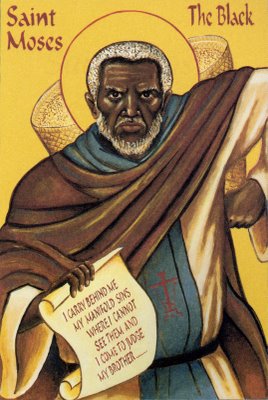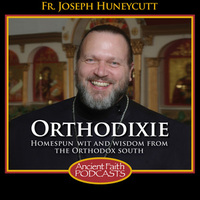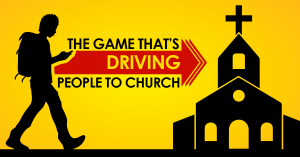Over the years I’ve found that listening to Classical Music in my car is the best way to not only control road rage, but to actually enjoy driving. Therefore, I listen to NPR stations a lot. If you’re accustomed to the same, you know that sometimes you might tune in and they are playing the most fabulous hits of the Classical Music World –
Like the greatest hits of Mozart, Bach, and, oh, Garrison Keillor. You know … for some reason, their programming just seems extra heavenly on that particular day!
Then, you hear the voice that’s asking for money, donations. That’s right, it’s that time of year again:
Fund raising.
Yet, money is a little less painful topic than the subject of this post.
Are you ready?
Forgiveness.
Also, come closer … I don’t want to upset anyone here …
I’m also going to talk about a man who was part of a gang, a murderer … and he was …
BLACK!
And no, I don’t mean he was African-American. This was long before there was a country called America and, essentially, I’m not really talking about skin color.
But first, back to the Fund Raising. I once heard someone say, during one of those NPR money pleas, that you don’t mind the begging, once you’ve given.
You don’t mind the begging – once you’ve given!
In other words, after you’ve made your donation, the requests for money is directed toward OTHERS – you’re in the clear. It’s much the same with FORGIVENESS.
For instance, there’s that familiar Gospel reading which goes like this:
Then Peter came to Him and said, “Lord, how often shall my brother sin against me, and I forgive him? Up to seven times?” Jesus said to him, “I do not say to you, up to seven times, but up to seventy times seven. Therefore the kingdom of heaven is like a certain king who wanted to settle accounts with his servants. And when he had begun to settle accounts, one was brought to him who owed him ten thousand talents. But as he was not able to pay, his master commanded that he be sold, with his wife and children and all that he had, and that payment be made. The servant, therefore, fell down before him saying, ‘Master, have patience with me, and I will pay you all.’ Then the master of that servant was moved with compassion, released him, and forgave him the debt. But that servant went out and found one of his fellow servants who owed him a hundred denarii; and he laid hands on him and took him by the throat, saying, ‘Pay me what you owe!’. So his fellow servant fell down at his feet and begged him, saying, ‘Have patience with me, and I will pay you all.’ And he would not, but went and threw him into prison till he should pay the debt. So when his fellow servants saw what had been done, they were very grieved, and came and told their master all that had been done. Then his master, after he had called him, said to him, ‘You wicked servant! I forgave you all that debt because you begged me. Should you not also have had compassion on your fellow servant, just as I had pity on you?’ And his master was angry, and delivered him to the torturers until he should pay all that was due to him. So My heavenly Father also will do to you if each of you, from his heart, does not forgive his brother his trespasses.” [Matthew 18:21-35]
Here we see a model of the Church, the safe ship on the stormy sea. It is in the Church that we find forgiveness from God. We are brought into the family of God, the Church of Christ. Yet the unfaithful servant, after gaining the Grace of God’s forgiveness, lost it all when he failed to forgive in return. We too can lose everything that we have been given (and forgiven) by God in that terrible moment when we refuse to forgive our debtors. We receive forgiveness in the Sacrament of Confession. We receive Grace in the Sacrament of Holy Communion. And in one moment, that moment when we turn our back, walk out on God, and demand of our debtors that which we have been forgiven — we lose it all. In the Orthodox Tradition, the Church is called the Kingdom of God on earth. Thus, when our Lord speaks of the Kingdom of Heaven we should also see therein a model for the Church.
Now, on to today’s subject: St Moses the Black.
Moses was a former gang leader, murderer, and thief in ancient Africa. However, he became a model of transformation. His is one of the most inspiring stories among the African saints.
Moses lived in the 4th century – he was an escaped slave and the leader of a group of 75 robbers. He was a large and powerful man, who with his gang terrorized the entire region. Moses was transformed after they had stolen some sheep and wished to seek asylum in a monastery. The Abbot greeted Moses with open arms – and such a warm welcome that it had a life-changing impact on Moses the Ehiopian. The peaceful welcome and warm manner of the monks overwhelmed him. He immediately felt remorse for all his past sins, sincerely repented, and begged to remain at the monastery. He soon gave up his old way of life, became a Christian, and he and his fellow gang members were baptized.
Yet, Moses, even AFTER becoming a Christian, was tortured by his past and for years was tempted to return to his old ways. The Devil fought him intensively with his old habits of excessive eating, drinking, and fornication. Moses also had a rather difficult time adjusting to regular monastic discipline. His flair for adventure remained with him. Attacked by a group of robbers in his desert cell, Moses fought back, overpowered the intruders, and dragged them to the chapel where the other monks were at prayer. He told the brothers that he didn’t think it Christian to hurt the robbers and asked what he should do with them. The overwhelmed robbers repented, were converted, and themselves joined the community.
Yet, much of Moses’ temptations to his former way of life became transformed one day when he had a vision while he was confessing his sins to St Macarius. It is said that Moses saw a vision of an angel — who appeared with a tablet full of his sins. As he confessed each sin, the angel began wiping the tablet clean. The more he confessed, the more the angel wiped, until by the end, after a full Confession, the tablet was completely clean. After meeting St. Macarius and St. Isidore, he completely left his old ways behind him and became a monk.
Moses was zealous in all he did, but became discouraged when he concluded he was not perfect enough. Early one morning, Saint Isidore, abbot of the monastery, took Moses to the roof and together they watched the first rays of dawn come over the horizon. Isidore told Moses, “Only slowly do the rays of the sun drive away the night and usher in a new day, and thus, only slowly does one become a perfect contemplative.”
A favorite incident of many is the story of the hospitality of a certain Arsenius toward a visiting monk. Arsenius received the monk in absolute silence. Moses, however, greeted the visitor with joy. When someone asked for an explanation, the answer was in the form of two visions. One has Arsenius in a boat with Angels in silence, another saw Moses in the boat with the Angels eating sweetmeats.
Later, St. Moses was ordained to the priesthood –
Now, here’s a story that might shock you; but listen carefully. The blessing of the Lord came upon Moses. After a while, he became the Father and the spiritual guide of 500 brothers, who elected him to be ordained a priest. When he came before the Patriarch to be ordained, the Patriarch wanted to test him by asking the elders, “Who brought this black here? Cast him out.” He obeyed, and left saying to himself, “It is good what they have done to you, O black colored one.” The Patriarch, however, called him back and ordained him a priest, and said to him, Moses, all of you now has become white.”
You see, brothers and sisters, Moses was put to the test – not of his ethnicity or race – but of humility. He became know for his wisdom, humility, love, and non-judgment of others.
A certain wealthy, high-ranking official once came to Sketis with a large caravan. He bestowed gifts upon the monks and inquired where he might locate the elder Moses. After receiving directions, the official set out to visit the Ethiopian monk. Moses, perceiving in the Spirit the approach of the official, went out to meet him, in the guise of a traveler.
Encountering the dusty elder along the way, the official asked him if he knew the whereabouts of Moses. “What do you want with that troublemaker?” the elder asked him. “Stay away from him. He will do you no good.” The official, stunned and scandalized, returned to Sketis and told the monks of his conversation on route. They could not believe that anyone would speak so about Moses and asked the official to describe the man he met. The official described him as being tall, white-haired, and black, with ragged and dusty clothing. Hearing this, the relieved monks informed the official that the monk he had conversed with was none other than Moses himself. The official was somewhat chagrined and realized that Moses wished to avoid the praise and recognition of men. And so, edified, he returned to his home.
Once a brother had been caught in a particular sin, and the abbot asked St. Moses to come to the church and render judgment. He came reluctantly, carrying on his back a leaking bag of sand – which had a hole in it, and dribbled a path of sand behind him all the way to the church. When he arrived, the brothers asked him why he was carrying such a thing. He simply said, “This sand is my sins which are trailing out behind me – which I don’t see – and yet you ask me to judge the sins of my brother before me?” At that reply, the brothers forgave the offender and returned to focusing on their own salvation rather than the sins of their brother.
In 405 A.D., at age 75, St. Moses suffered a martyr’s death, when his monastery was attacked by a group of barbarians. At about age 75, about the year 405 AD, word came that a group of Berbers planned to attack the monastery. The brothers wanted to defend themselves, but Moses forbade it. He told them to retreat, rather than take up weapons. He and seven others remained behind and greeted the invaders with open arms – the same as they had once been welcomed – but all eight were slain — martyred by the bandits.
You see, when you realize that you’ve been forgiven much – When you are grateful — You are naturally inclined to give.
TO GIVE EVEN MORE.
Forgiveness if FOR giving. And, today, St Moses the Black is not only considered the patron Saint of African-Americans – but, a model for us all. St Moses is a model of Christian humility, love and forgiveness.
Let us open our arms each week in our churches and homes to those who are seeking, no matter the color of their sins – nor especially their skin color — for, in so doing, we may be welcoming future Saints unaware!
St Moses the Black is commemorated August 28th.
St. Moses the Black, pray to God for us!
Info, above, taken from various sources available on the Web. Image Source












